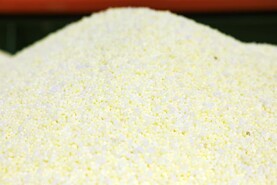Tuesday’s open day at Teagasc Johnstown felt like an important moment for Irish farming.
After over a year of intense policy debate around CAP and sectoral emissions targets, we moved to looking to how we meet the challenges set by the agreed targets.
And we did so at the nerve centre of the drive for sustainability. At times over the last decade in particular, it has felt like Johnstown was the forgotten child of Irish agricultural research, as Moorepark in particular caught the spotlight in the era of dairy expansion. That has clearly changed. The cutting edge of farming is all about marrying economic and environmental sustainability goals. Johnstown is the key hub right now.
The Wexford research facility was first set up by the newly formed Agricultural Institute in 1959.
Tom Walsh, who drove its development, referred to it as “the mothership”, Ger Shortle explained in an opening address to the hordes who descended on Tuesday in scorching sunshine.
Shortle is the Teagasc regional advisory manager, and the day saw the close synergy between Teagasc’s research and advisory services on full display. It’s a synergy that serves Irish farmers well, as the latest technology can be brought straight on to the farm, with little ever lost in translation.
From the very outset, the message was clear – there’s much that farmers can do, but it’s now time to do it.
The challenge will be getting buy in from 130,000 farmers. Those present seemed receptive to the message being delivered, but what about the tens of thousands of farmers out of the reach of open days like this.
Gary Lanigan estimated that if we have full uptake of the marginal abatement measures, that will get us about 80% of the way to meeting our sectoral targets. But full uptake is a daunting task.
The ASSAP programme has seen advisers on every farm in targeted vulnerable areas. The whole country must become a targeted area to achieve huge uptake of the technology being recommended and explained in Johnstown Castle.
The site of Teagasc’s new National Research and Innovation Centre is adjacent to Johnstown Castle, which doubles as the National Agricultural Museum. In many ways, it’s appropriate that the past and the future are side by side, because farming always benefits from moving forward while being aware of the learnings from the past.






 This is a subscriber-only article
This is a subscriber-only article









SHARING OPTIONS: